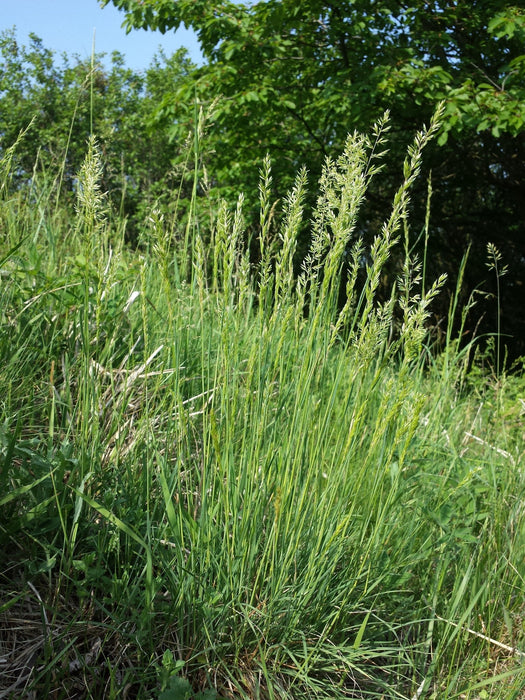
Prairie Junegrass Seeds (Koeleria macrantha)
A tough, but lush, clumpy grass that can support butterfly caterpillars, grazing mammals, and even function as a lawn grass.
Like a number of other Northwest regional meadow species (selfheal, yellow rattle, yarrow), prairie junegrass is a species with circumpolar distribution, occurring across much of the cool regions of the Northern Hemisphere. In the UK where it is a foundation of many upland meadows it’s known as crested hairgrass.
This is a lush, clump-forming grass for open, exposed areas with good drainage and a decent amount of sun. Like nearly all of our regionally-adapted grasses, this is a species that puts on most of its growth in cooler seasons (fall and spring), with growth slowing in mid-summer.
Prairie junegrass is a host plant for caterpillars of the Columbia skipper butterfly (Hesperia columbia) and probably a number of other skippers as well. It’s also highly palatable for livestock, deer, and elk. Functionally, this is a highly versatile grass, and can be allowed to either mature into its natural tussock (or mounded) shaped, which is an interesting architectural feature, or it can be mowed roughly and included in alternative turf mixes to create a lawn-like effect with some ecological value. (A few good junegrass companion species for this approach are red fescue, selfheal, prairie burnet).
Mature height (including the seed heads) is approximately 1.5 feet. Best planted in the fall or early spring.
Approximately 8,000-10,000 seeds (4 grams), enough to sow approximately 200-300 square feet.

